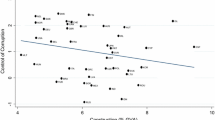Abstract
The primary purpose of this paper is to evaluate the causes of overbuilding in the context of economic base theory. A second and closely related purpose is to determine if the economic base multiplier effect is stronger in the long run. Construction decisions depend on the strength of the local economy. Since basic activity is highly cyclical, if there are significant lags in the multiplier process running from basic to nonbasic sectors, then growth in non-basic employment will continue when the basic sector slows or declines. Hence, overbuilding may be, in part, a result of false signals about future growth in the local economy to builders, developers and lenders at the time a project is conceived. In addition, one of the important sources of the lags in the multiplier process is the construction sector. Potential solutions to overbuilding are discussed in an economic base context. The implications for bank regulation, bank lending and feasibility analysis are discussed.
Similar content being viewed by others
References
Ackley, Gardner.Macroeconomics; Theory and Policy. New York: Macmillan, 1978.
Barth, James R., and James D. Shilling. “Introduction,”Journal of Real Estate Finance and Economics 5 (June 1992), pp. 115–118.
Bidanda, Bopaya, and David I. Clelland. “Techniques for Assessing Project Feasibility,”Project Management Journal 20 (June 1989), pp. 5–10.
Bender, Lloyd D., and Larry D. Parcels. “Structural Differences and the Time Pattern of Basic Employment,”Land Economics, 59 (May 1983), pp. 220–234.
Braschler, Curtis. “A Comparison of Least Squares Estimates of Regional Multipliers With Other Methods,”Journal of Regional Science 12 (December 1972), pp. 457–468.
Broadsky, Harold, and David E. Sarfaty. “Measuring the Urban Economic Base in a Developing Country,”Land Economics 53 (November 1977), pp. 445–454.
Corcoran, Patrick J. “Explaining the Commercial Real Estate Market,”Journal of Portfolio Management 13 (Spring 1987), pp. 15–21.
Corgel, John B., and Gerald D. Gay. “Local Economic Base, Geographic Diversification and Risk Management of Mortgage Portfolios,”Journal of the American Real Estate and Urban Economics Association 15 (Fall 1987), pp. 256–267.
Corgel, John B., and Terrance M. Clauretie. “Diversification Strategies for Mortgage Default Risk Management,”Real Estate Finance Journal 5 (Spring 1990), pp. 94–96.
Dasso, Jerome. “Techniques of Area Analysis,”Appraisal Journal 55, (October 1987), pp. 578–591.
Epley, Donald R. “Further Evidence of a Short-Run Economic Base Multiplier,”Annals of Regional Science 17 (November 1983), pp. 77–82.
Froyen, Richard T.Macroeconomics: Theories and Policies. New York: Macmillan, 1986.
Garnick, Daniel H. “Differential Regional Multiplier Models,”Journal of Regional Science 10 (April 1970), pp. 35–47.
Gerking, Shelby D., and Andrew W. Isserman. “Bifurcation and the Time Pattern of Impacts in the Economic Base Model,”Journal of Regional Science 21 (1981), pp. 451–467.
Greytak, David. “A Statistical Analysis of Regional Export Estimating Techniques,”Journal of Regional Science 9 (December 1969), pp. 387–395.
Hambor, John C., and W. Douglas Morgan. “A Quarterly Econometric Analysis of Commercial Construction,”Southern Economic Journal (October 1971), pp. 248–259.
Hambor, John C., and W. Douglas Morgan. “The Determinants of Commercial Construction,”Western Economic Journal (June 1971), pp. 172–183.
Henry, Mark S., and Nyankori, J.C.O. “The Existence of Short-Run Economic Base Multipliers: Some New Empirical Evidence,”Land Economics 57 (August 1981), pp. 448–458.
Hildebrand, George H., and Arthur Mace. “The Employment Multiplier in an Expanding Industrial Market: Los Angeles County, 1940–1947,”Review of Economics and Statistics 32 (August 1950), pp. 241–249.
Hoyt, Homer. “The Economic Background of Cities,”The Journal of Land and Public Utility Economics (nowLand Economics), (May 1941), pp. 188–195.
Hoyt, Homer. “The Utility of the Economic Base Method in Calculating Urban Growth,”Land Economics 37 (February 1961).
Krikelas, Andrew C. “Why Regions Grow: A Review of Research on the Economic Base Model,”Economic Review, Federal Reserve Bank of Atlanta, 77 (July/August 1992), pp. 16–29.
McKenzie, Dennis J., and Richard M. Betts.The Essentials of Real Estate Economics. New York: John Wiley, 1980.
McNulty, James E. “The Time Dimension in Economic Base Analysis,”Land Economics 53 (August 1977), pp. 359–368.
Moscovitch, Edward. “The Downturn in the New England Economy: What Lies Behind It?”New England Economic Review (July/August 1990), pp. 53–65.
Moody, Harold T., and Frank W. Puffer. “The Empirical Verification of the Urban Base Multiplier: Traditional and Adjustment Process Models,”Land Economics 46 (February 1970), pp. 91–98.
North, Douglas C. “Location Theory and Regional Economic Growth,”Journal of Political Economy 63 (June 1955).
North, Douglas C. “A Reply,”Journal of Political Economy 64 (April 1956), pp. 165–168.
Rabianski, Joseph. “An Alternative Approach to Economic Base Analysis,”Real Estate Appraiser 43 (September/ October 1977), pp. 49–54.
Shahidsaless, Shahin, William Gilles, and Ron Shaffer. “Community Characteristics and Employment Multipliers in Nonmetropolitan Counties, 1950–1970,”Land Economics 59 (February 1983).
Sumicrast, Michael, and Maury Seldin.Housing Markets: The Complete Guide to Analysis and Strategy for Builders, Lenders and Other Investors. Homewood, Illinois: Irwin, 1977.
Tanner, J. Ernest. “Variable Distributed Lags and Forecasting Non-Residential Construction,”Canadian Journal of Economics 7 (November 1974), pp. 642–654.
Tiebout, Charles M. “Exports and Regional Economic Growth,Journal of Political Economy 64 (April 1956), pp. 160–164.
Tiebout, Charles M.The Community Economic Base Study. New York: The Committee for Economic Development, 1962.
Tiebout, Charles M. “Rejoinder,”Journal of Political Economy 64 (April 1956).
Weimer, Arthur, Homer Hoyt, and George F. Bloom.Principles of Real Estate. Sixth Edition, New York: The Ronald Press, 1972.
Weiss, Steven J. and Edwin. C. Gooding. “Estimation of Differential Employment Multipliers in a Small Regional Economy,”Land Economics 44 (May 1968), pp. 235–244.
Author information
Authors and Affiliations
Rights and permissions
About this article
Cite this article
Mcnulty, J.E. Overbuilding, real estate lending decisions, and the regional economic base. J Real Estate Finan Econ 11, 37–53 (1995). https://doi.org/10.1007/BF01097935
Issue Date:
DOI: https://doi.org/10.1007/BF01097935




